Samsung Q800T (QE65Q800T) review: Samsung's cheaper 8K TV really offers better-than-4K performance
The Samsung Q800T has bright detailed pictures, remarkable black levels and is ideal for PS5 and Xbox Series X
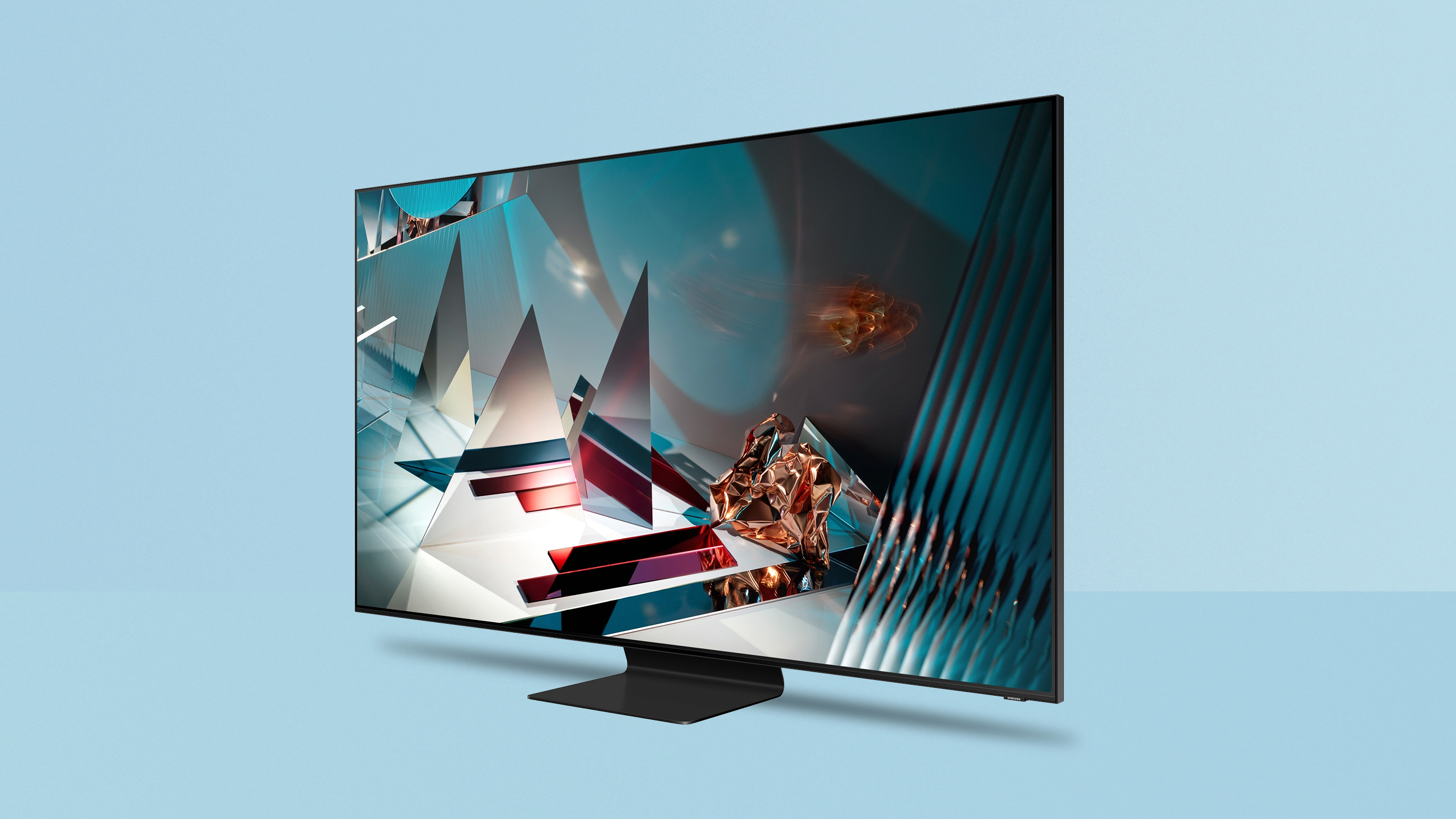
The Samsung Q800T 8K TV feels like a potentially sensible futureproofing move as companies start talking about delivering 8K content in the coming months (albeit in small amounts). Especially now that Samsung has actually made quality 8K much less expensive, without compromising picture and sound quality nearly as much as we might have expected.
-
+
Bright, ultra-detailed pictures
-
+
Impressive design and build quality
-
+
Remarkable black levels for LCD
-
+
4K 120Hz and VRR support
-
-
It's still more expensive than 4K OLED rivals
-
-
Bright highlights struggle against dark backdrops
-
-
No Dolby Vision support
Why you can trust T3

In this Samsung Q800T review, it's time to talk 8K.
With a few potential 8K sources appearing on the horizon now, buying an 8K TV is starting to feel like it has a bit of purpose. Unfortunately, though, the best 8K TVs have remained persistently beyond the budgets of all but the most affluent AV fans. Until now.
Prices aren't quite as low as most of the same-sized flagship 4K sets in our list of the best TVs and best OLED TVs, but Samsung’s 65Q800T is a 65-inch 8K TV that has definitely come down into more realistic territory for more people, making it more tempting than ever.
It still comes with a lot of Samsung's more advanced screen and speaker tech, and is packed with all the latest key features, including 4K at 120Hz support and Variable Refresh Rates, which make it a really interesting option for those with the PS5 and Xbox Series X, both of which have promised 8K support.
Samsung Q800T review: Price & features
At the time of writing, the Samsung QE65Q800T is available for an official price of £2,999/$3,499 – however, current deals have brought it down as low as £2,299/$2,699. This is hardly chicken feed, of course – but it is a pretty ground-breaking price for a TV that combines a native 8K pixel count of 7680x4320 with premium LCD TV features such as QLED colour technology and direct LED lighting with local dimming.
In fact, even that official price is already already much, much cheaper than when the set first launched back in the spring. Go bigger, though, and the 75-inch Q800T is £3,499/$3,299 and the 82-inch model is £4999/$4,499. The bottom line is that the 65Q800T just about moves 8K with top-level tech features into a price bracket where it competes with premium 4K TVs, and that’s a pretty big deal.
Given that the even more premium Samsung Q950TS is considerably more expensive, it’s clear that the brand must have cut a few corners to get the QE65Q800T down to this price. Starting with the fact that the Q800T doesn’t have an external connections box. Its connections are all built into its main chassis.
The Q800T also uses a fairly considerably down-specced backlighting system from the one found in the Q950TS sets. It’s still a FALD panel, meaning it uses LEDs placed directly behind the screen and local dimming technology to output different brightness levels from different parts of the screen, as the image requires. However, it ‘only’ delivers 224 independent dimming zones, versus 480 on the Q950TS.
Having less than half the number of dimming zones of its big brother will inevitably impact picture quality. The key issue will be, of course, how big this impact is. Despite being so much cheaper than the Q950TS, though, the Q800T still gets Samsung’s new power management technology. This improves contrast by distributing the way power is addressed to the screen more intelligently, borrowing it from dark picture areas and piping it into bright ones.
The Q800T also gets Samsung’s latest Quantum 8K processor, with its ‘artificial intelligence’-boosted upscaling of sub-8K content. This will have a big role to play in the TV’s life, of course, given that there’s currently hardly any native 8K content to be found.
The Q800T is a QLED TV, too, meaning it benefits from Samsung’s Quantum Dot colour system. Samsung wraps its Quantum Dots in a metallic outer shell, so that they can be driven harder for more brightness and a wider colour range. Depending on the picture settings you’re using, that brightness stretches to an impressive 1,670 nits on a 10% white HDR window – more than double the sort of peak brightness OLED TVs are capable of. Though there is an important qualification to this point that I’ll cover in the picture quality section below.
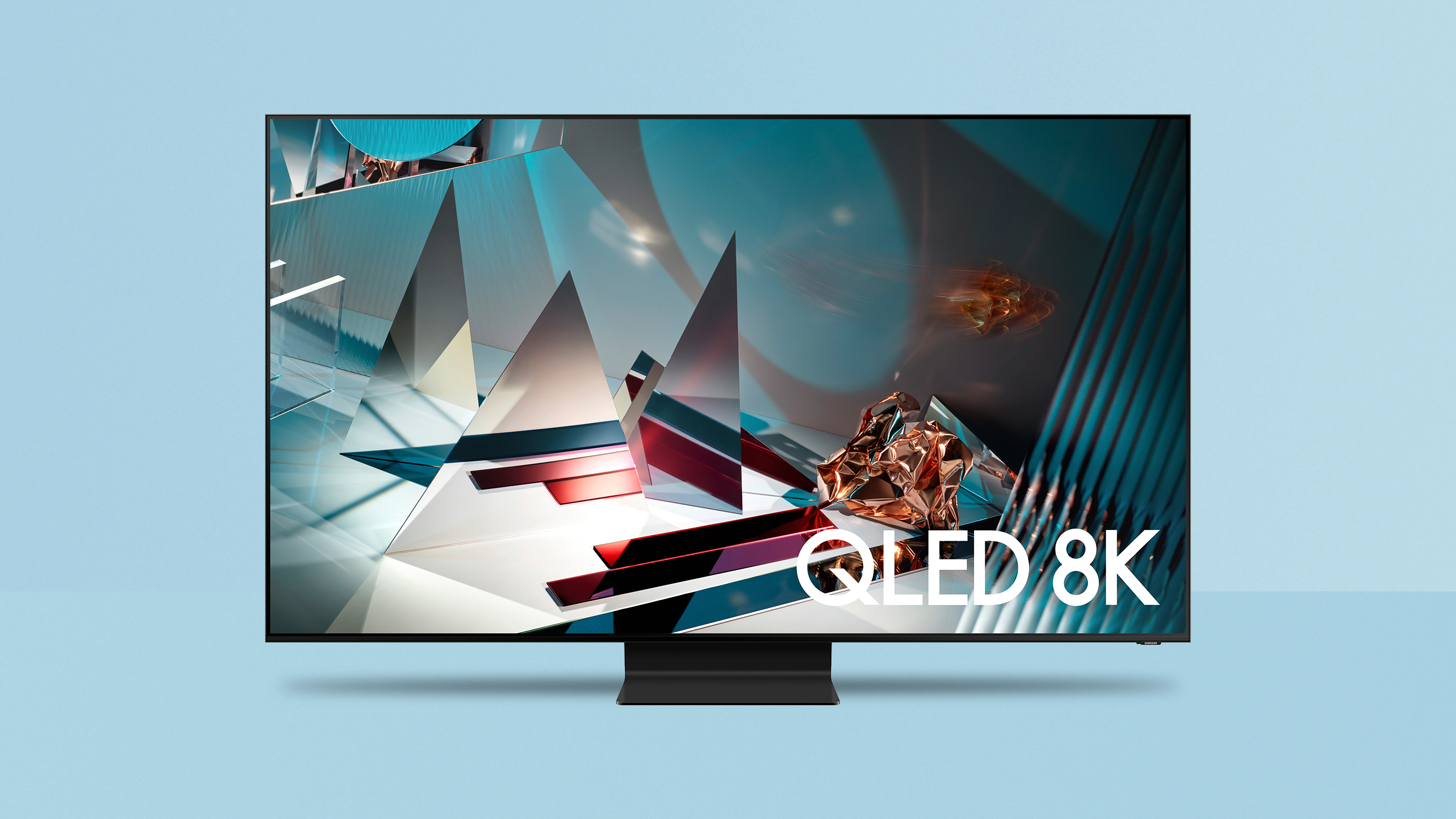
The Q800T continues to support the wide viewing angle technology Samsung introduced in 2019. Though since this technology trades viewing angles for clarity, Samsung has reduced the effective angles a bit this time round to make sure the 8K resolution holds up.
As ever with Samsung TVs, the Q800T doesn’t support the Dolby Vision format of HDR, with its extra scene by scene image data. It does support the standard HDR10 format, though, along with the HLG format typically used for live HDR broadcasts, and the HDR10+ format that stands as an open alternative to Dolby Vision. There’s no hiding from the facts, though, that Dolby Vision content is more common than HDR10+ content, and that some rival TVs from Panasonic and Philips support both HDR10+ and Dolby Vision.
As you would hope of an 8K TV, the Q800T has the connections to unlock 8K playback from external sources include, potentially, the next generation of consoles – both the PS5 and Xbox Series X have promised 8K support, though have yet to say exactly what it might look like. One of the HDMI ports is built to the latest 2.1 standard, and includes support for 8K at 60Hz, 4K at 120Hz (a must for the new consoles), Variable Refresh Rate and Automatic Low Latency Mode switching.
It’s a pity Samsung didn’t provide at least one further HDMI 2.1 port; after all, the Xbox Series X, PS5 and latest PC graphics cards are all promising the sort of specs HDMI 2.1 is needed for, and it's not wild to think that someone buying an 8K TV might go for both consoles. But at least there’s one, which is more than can be said for many rival TVs.
Smart features are provided by Samsung’s content-rich, Tizen-based Eden platform. This covers really all of the key video streaming services anyone could ever want, including Netflix, Amazon Prime Video, Rakuten, Disney+, Apple TV, and country-specific options for the UK and US.
The Q800T features some serious audio innovation, too, in the shape of Object Tracking Sound. On the Q800T, this uses speakers ranged down the sides and along the top and bottom of the screen to create both a much bigger soundstage that also places specific effects in the correct place on the screen. So if there’s a car donutting, say, you will hear its engine noise circle around on the screen too.
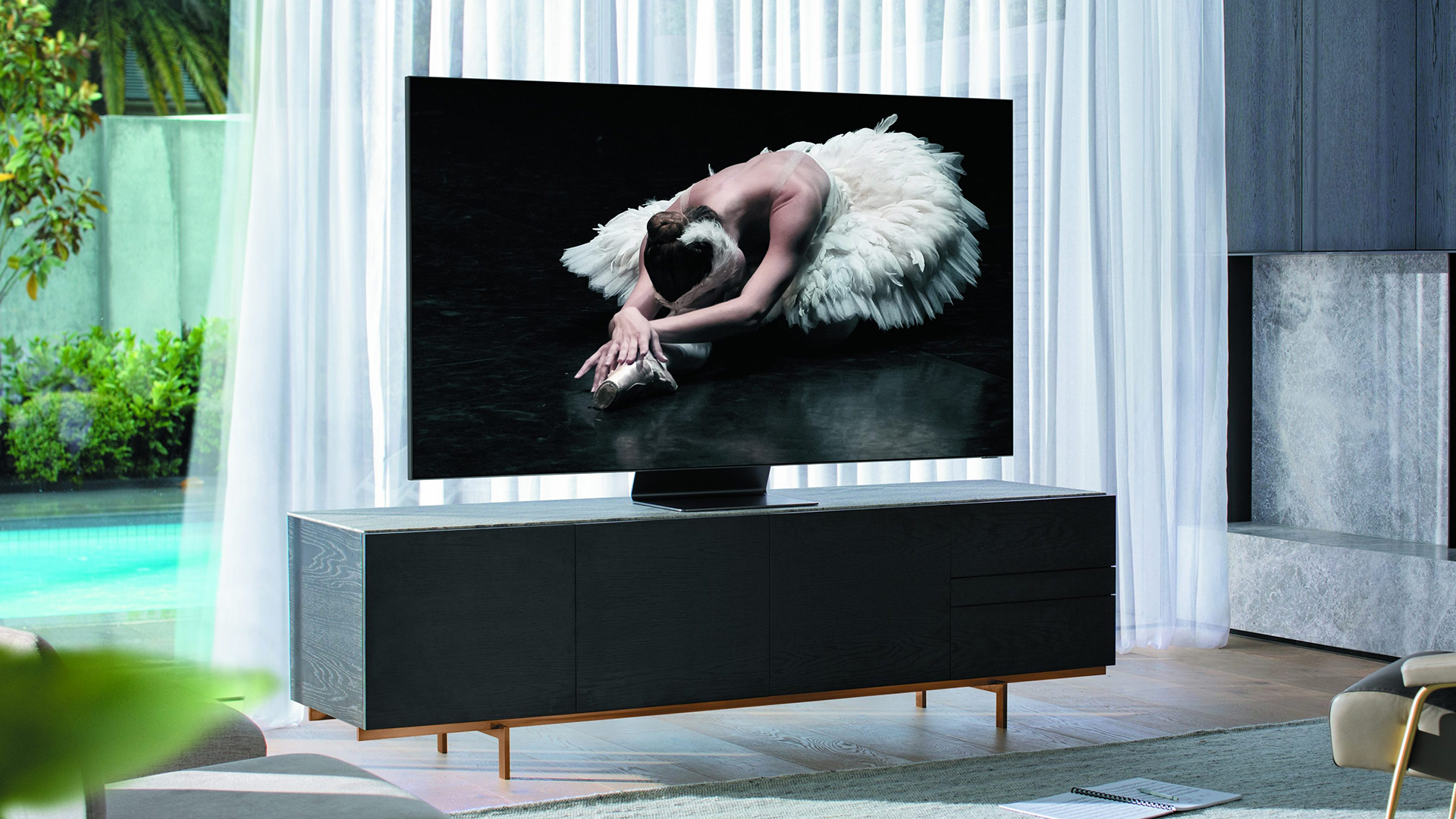
Samsung Q800T review: Picture quality
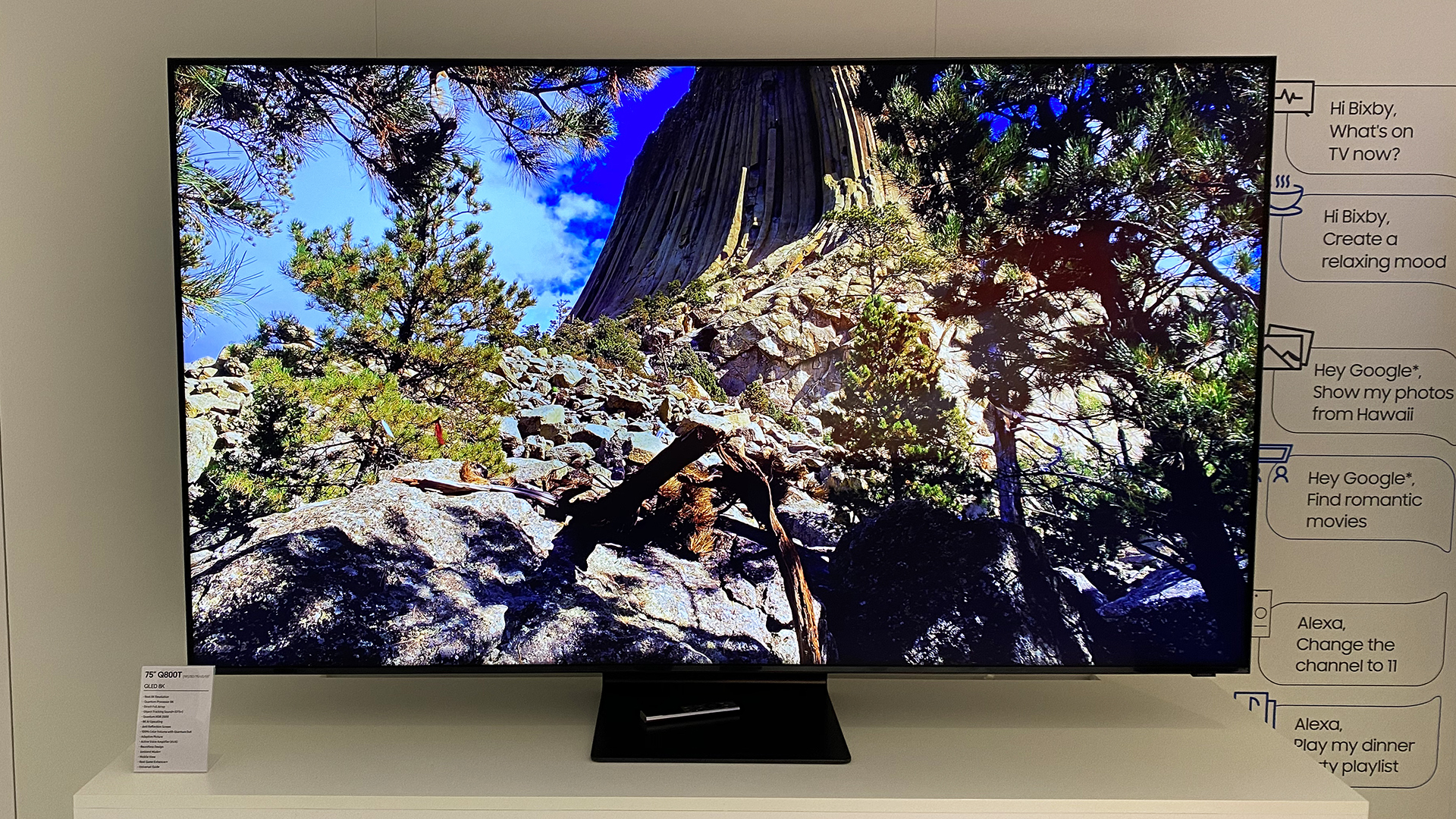
While the Q800T’s 8K resolution is nominally its highlight picture feature, its contrast performance is arguably more important. Despite only having half as many dimming zones as Samsung’s much more expensive Q950TS 8K models, it still delivers the deepest black levels you’ll find on any LCD TV for its price point. Seriously, we’re talking OLED-like blackness at times.
That it can do this while also being capable of hitting the best part of 1,700 nits with bright HDR image highlights is quite something, and typically makes it a monumentally spectacular sight with HDR sources. Especially as the combination of its clever local dimming engine and new backlight power management means that even when an HDR highlight appears against a dark backdrop you tend to see surprisingly little backlight clouding around it.
This minimal clouding is only possible, though, because Samsung’s processing dims small bright highlights down quite heavily when they appear against very dark backdrops. Sony’s latest premium TVs, by comparison, choose to maintain the brightness of stand-out HDR highlights, but the pay off is more noticeable backlight haloing.
OLED TVs, of course, can produce the brightest highlights right alongside the darkest blacks without compromising either, creating a fantastically intense sense of local contrast. The maximum brightness you’ll get out of an OLED TV is around 1,000 nits, though, and that’s only on the super-expensive Panasonic HZ2000. With normal OLEDs you’re talking more like 700-800 nits.
The two biggest questions associated with the 65Q800T’s 8K resolution have to be a) whether it really makes a difference on a screen as ‘small’ as 65 inches, and b) if it makes any difference to non-8K sources given how little native 8K content there currently is.
The answer to both questions is yes. Not a massive ‘shout it from the roof tops’ yes, perhaps, but any sort of positive result is enough to make the 65Q800T at least worth adding to a premium TV consideration list.
So with native 8K sources – in this case, a lovely 8K HDR showreel from Spears & Munsil featuring clips of beautiful vistas and brightly coloured animals – you can appreciate the benefits of the native 8K pixel count. Even from a regular viewing distance.
The impact at this screen size feels more about slightly better clarity, naturalism and depth of field than massively increased textures or details. If you want more you’ll need to step up to a 75-inch (or even bigger if you can) Q800T. But the key point is that 8K does still make some difference at 65 inches.
This holds up with upscaled 4K sources too. Samsung’s upscaling processing does well enough to make 4K pictures look slightly denser and three-dimensional than they do on native 4K screens. It means that there really is a benefit to going 8K at this time, even with no native material yet.
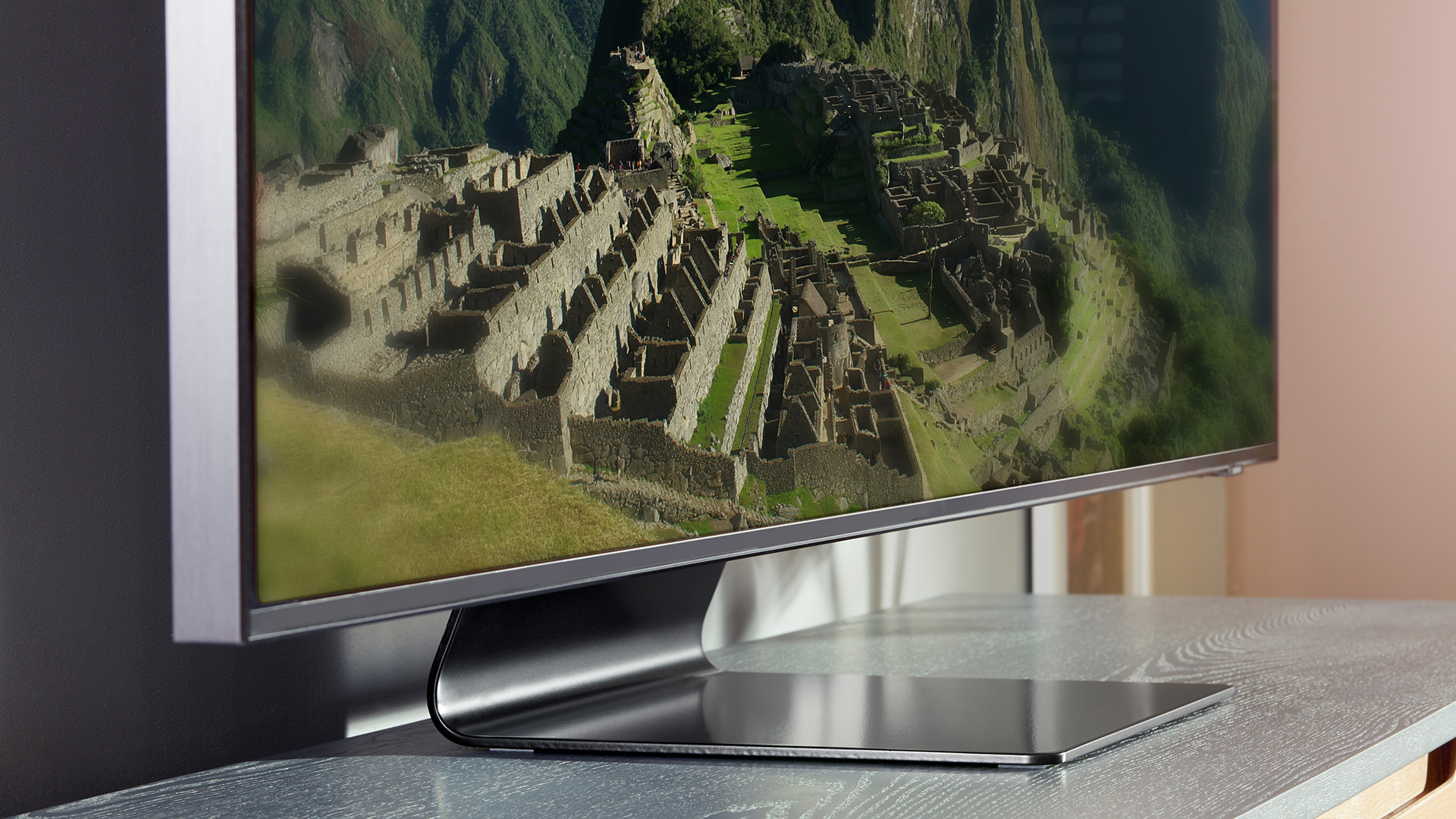
Things start to go downhill with HD sources, which can look a little soft once they’ve been pushed all the way up to 8K. That said, noise with these sources is better handled/suppressed than it was on Samsung’s 2019 8K TVs.
Colours are good – bright, punchy but also full of subtle shading and tones. They’re not quite as rich, though, as those of 2019’s flagship 4K model, the Q90R – perhaps because of the TV’s tendency to push brightness very aggressively in its out of the box settings.
The Filmmaker Mode preset gives you more accurate (to film industry mastering standards) colours, as well as reducing the amount of dimming the TV does with stand-out HDR highlights. It also reduces black levels, though, and looks much duller than the other presets. As a result, for many viewers the best option will be to use tweaked versions of the Standard or Natural presets.
While viewing angles on the Q800T are better than those of regular LCD TVs, there is still contrast and colour loss once you get beyond around 30 degrees. Backlight blooming can start to become more noticeable at this point too.
Turning finally to the Q800T’s game performance, its Game preset impresses with only 10ms of lag – pretty much as low as it gets for TVs. There’s also a potentially handy option for raising the brightness of dark areas without affecting the rest of the image, so that you can spot monsters hiding in the dark, while the support for the AMD FreeSync VRR system seems to work well at suppressing screen tearing issues with Xbox games.
Achieving 10ms of lag does require the TV to reduce the quality of its local dimming system and slightly flatten its colours. So for games that aren’t especially reaction-sensitive you could consider turning the Game mode off. For those times when every split second counts, though, the Q800T won’t let you down.
Samsung Q800T review: Sound quality
The Q800T’s Object Tracking Sound system works brilliantly. The way it positions specific sounds at the correct place on the screen to match the action in the pictures is uncanny at times – so much so that it actually takes an hour or two to get used to. Once you have, though, it unquestionably makes soundtracks feel more immersive and detailed, and you really miss it whenever you find yourself watching a TV with a ‘normal’ sound system.
The OTS system helps voices sound natural and ‘forward’ in the mix, and there’s plenty of power and dynamic range – including healthy amounts of bass rumble – to underpin the carefully positioned on-screen details. The detailing actually tracks objects off screen too, giving the soundstage plenty of scale.
It’s perhaps a pity that a multi-channel, object-tracking speaker system like this isn’t partnered with built-in Dolby Atmos decoding.

Samsung Q800T review: Design & usability
The Q800T isn’t as attractive as the Q950TS, thanks to the flagship model’s ground-breakingly skinny screen frame and separate connections box. It still looks attractive for its money, though. While not Q950TS slim, for instance, its frame is still very trim indeed, while making its rear as flat as its screen gives it a fashionably monolithic look. This is reinforced by uncompromising build quality, and some handy cable channelling systems make the lack of an external connections box pretty easy to take.
Samsung’s Ambient Mode is worth mentioning, too. This lets you call up a range of still or video screen savers, running at a low power setting, when you’re not watching the set. This is arguably preferable to just having your room dominated by a 65-inch ‘black hole’ when you’re not watching TV.
The Q800T is mostly very easy to use. It supports plenty of voice control options, including Amazon Alexa, and the Eden smart interface is compact in screen real estate terms, but still easy to follow and customise.
Samsung Q800T review: Verdict
While the Q800T doesn’t make quite as irresistibly compelling a case for 8K as its bigger, more highly specified Q950TS siblings, it is good enough to get some extra capital from its 8K resolution – as well as delivering the other brightness, colour range and contrast strengths that have become a premium Samsung TV hallmark.
This makes Samsung’s mid-range 8K TV well worth considering if you'll be watching in a bright room especially, and if you want to have a TV future-proofed with all the latest technology, as well as that incredible resolution.
Samsung Q800T review: Also consider
We've already mentioned the Samsung Q950TS, which is Samsung's flagship 8K TV. It's very much like the Q800T, but just a little bit boosted for image quality. We happen to think it's the best TV on the planet right now – read our full Samsung Q950TS review to find out why.
If 8K sounds like overkill but you want as close image quality to this as you can get at 4K, the Samsung Q90T is the 4K equivalent. Its handling of contrast is slightly more limited than the Q800T (it has fewer dimming zones again), but you've still got the HDMI 2.1 future-proofing for next-gen consoles, the excellent smart platform, and it's given how much cheaper it is, it's one of the best TVs in its class. Here's our full Samsung Q90T review.
If you're happy with spending this kind of money, but would prefer to go OLED, then look to the Panasonic HZ2000 that we've already mentioned. Its 4K screen may be lower resolution, and its panel may be less bright, but for sheer cinematic realism, it can't be beaten. Read our full Panasonic HZ2000 review for more.
- The best 32-inch TVs – perfect for bedrooms and offices
- The best 43-inch TVs – great entry-level 4K sets
- The best 48- to 50-inch TVs – beautiful mid-size 4K TV sets
- The best 55-inch TVs – premium TVs that still fit most living rooms
- The best 65-inch TVs – beautiful big-screen TVs
- The best 75-inch TVs – giant 4K and 8K TVs packed with features
Sign up to the T3 newsletter for smarter living straight to your inbox
Get all the latest news, reviews, deals and buying guides on gorgeous tech, home and active products from the T3 experts
Matt is T3's former AV and Smart Home Editor (UK), master of all things audiovisual, overseeing our TV, speakers and headphones coverage. He also covered smart home products and large appliances, as well as our toys and games articles. He's can explain both what Dolby Vision IQ is and why the Lego you're building doesn't fit together the way the instructions say, so is truly invaluable. Matt has worked for tech publications for over 10 years, in print and online, including running T3's print magazine and launching its most recent redesign. He's also contributed to a huge number of tech and gaming titles over the years. Say hello if you see him roaming the halls at CES, IFA or Toy Fair. Matt now works for our sister title TechRadar.
-
 Warning: Ciele’s refreshed Elite Collection may cause excessive garment envy on race day
Warning: Ciele’s refreshed Elite Collection may cause excessive garment envy on race dayFlex on your run crew with Ciele’s latest drop
By Matt Kollat Published
-
 Smeg adds a touch of navy sophistication to its iconic breakfast set
Smeg adds a touch of navy sophistication to its iconic breakfast setIt's a minimalist's dream
By Lizzie Wilmot Published
-
 My most anticipated Netflix movie of the year gets a wild new trailer
My most anticipated Netflix movie of the year gets a wild new trailerHavoc looks pretty unbelievable
By Max Freeman-Mills Published